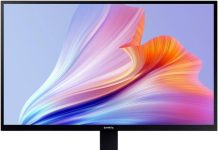Touch screen displays have become an integral part of modern technology, revolutionizing the way we interact with devices. This article explores the technology behind touch screen displays, their evolution, applications, advantages, and future prospects.
Evolution of Touch Screen Display Technology
Touch screen technology has evolved significantly since its inception. The earliest touch screens were resistive, requiring pressure to register inputs. Capacitive touch screens, which detect changes in capacitance, were later developed, offering higher sensitivity and multi-touch capabilities. Today, touch screen display are used in a wide range of devices, from smartphones to interactive kiosks.
Understanding Touch Screen Display Technology
Touch screen displays consist of several layers, including a protective cover glass, a touch sensor layer, an LCD or OLED panel, and a backlight. The touch sensor layer detects the user’s touch inputs and sends signals to the device’s processor, which then interprets them as commands. The LCD or OLED panel displays the visual content, while the backlight provides illumination.
Types of Touch Screen Displays
There are several types of touch screen displays, each with its own unique characteristics. Capacitive touch screens are the most common, offering high sensitivity and durability. Resistive touch screens are more affordable and can be operated with gloves or styluses. Other types of touch screens include infrared, acoustic wave, and optical touch screens, each with its own advantages and disadvantages.
Advantages of Touch Screen Displays
Touch screen displays offer several advantages over traditional displays. They provide a more intuitive and engaging user experience, allowing users to interact directly with the content on the screen. Touch screen displays are also more versatile, allowing for new forms of interaction and user interface design. Additionally, touch screen displays are more durable than traditional displays, as they do not have mechanical components that can wear out over time.
Applications of Touch Screen Displays
Touch screen displays are used in a wide range of applications across various industries. In consumer electronics, they are found in smartphones, tablets, and smartwatches. In the automotive industry, touch screen displays are used in dashboard displays, infotainment systems, and navigation systems. In the healthcare sector, touch screen displays are used in medical devices and diagnostic equipment.
Future Trends in Touch Screen Display Technology
The future of touch screen display technology is promising, with ongoing research focusing on improving sensitivity, reducing power consumption, and enhancing durability. One emerging trend is the development of flexible touch screen displays, which can be curved or folded to fit different form factors. Another trend is the integration of advanced haptic feedback technology, which provides users with tactile feedback when interacting with the screen.
Conclusion
In conclusion, touch screen displays have revolutionized the way we interact with technology, offering a more intuitive and engaging user experience. With ongoing advancements in technology, touch screen displays are expected to continue evolving, offering even greater sensitivity, durability, and functionality in the future.







